Man's Winter Boots (1 Pair) Item Number: E3980-0 from the National Museum of Natural History
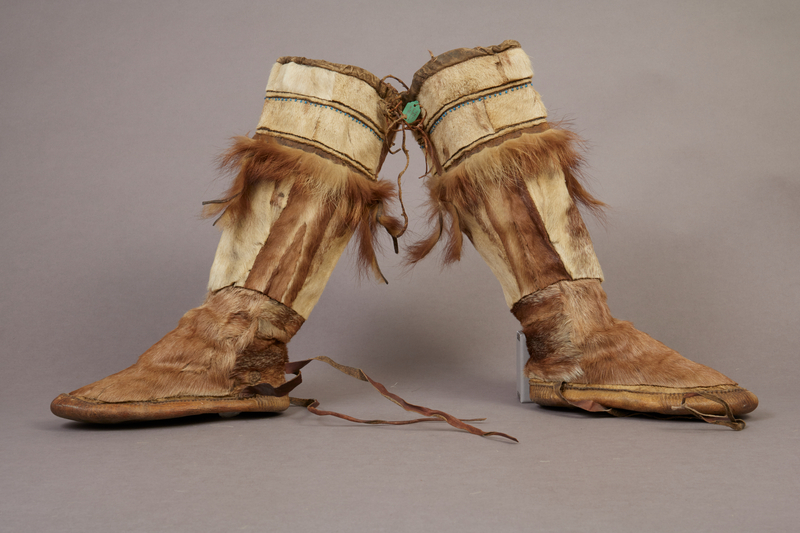
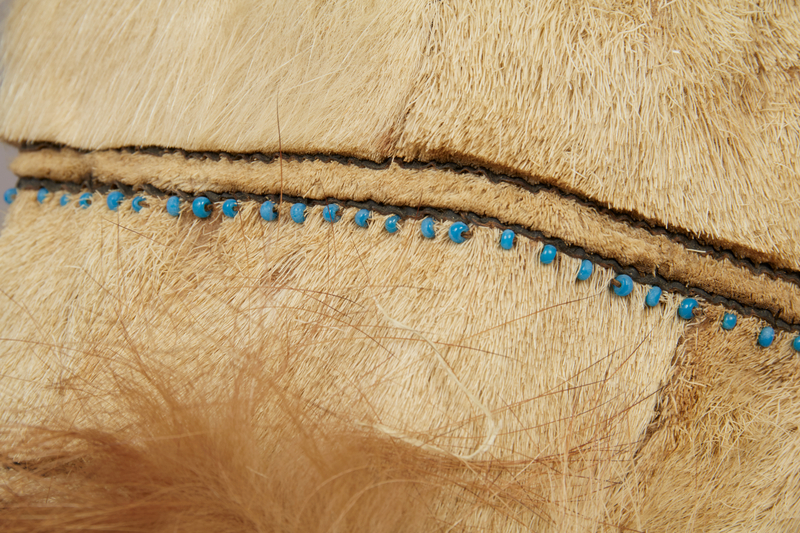

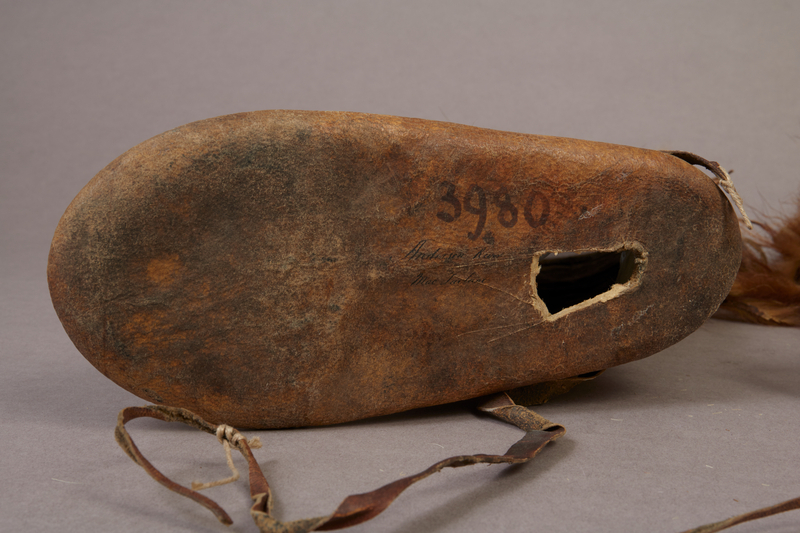
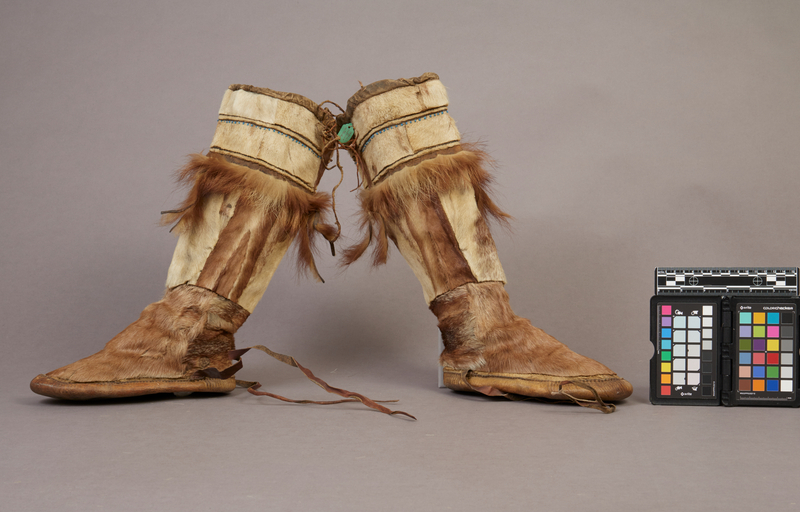
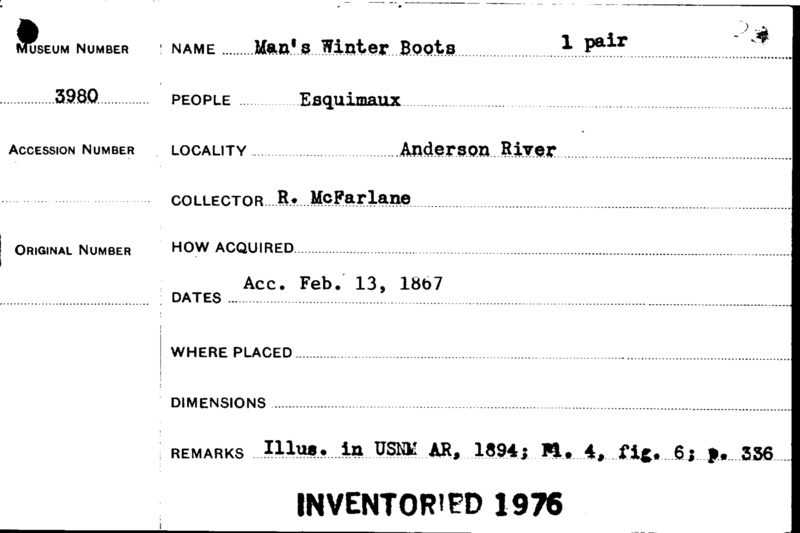
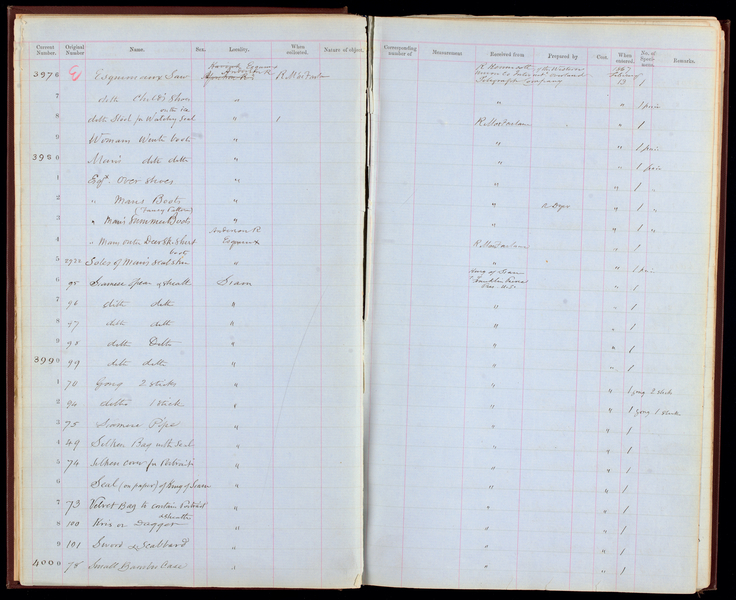
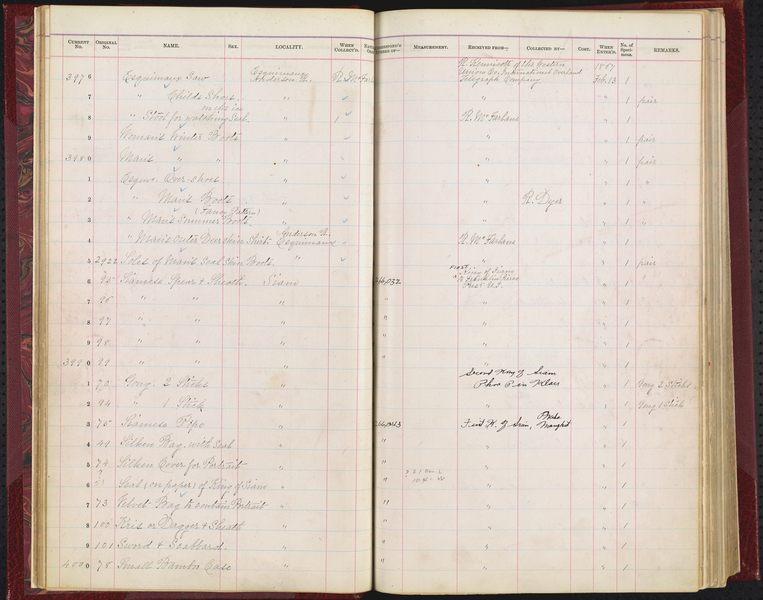
Notes
FROM CARD: "ILLUS. IN USNM AR, 1894; PL. 4, FIG. 6; P. 336. INVENTORIED 1976."Source of the information below: Inuvialuit Pitqusiit Inuuniarutait: Inuvialuit Living History, The MacFarlane Collection website, by the Inuvialuit Cultural Resource Centre (ICRC), Inuvik, N.W.T., Canada (website credits here http://www.inuvialuitlivinghistory.ca/posts/12 ), entry on this artifact http://www.inuvialuitlivinghistory.ca/items/270 , retrieved 1-8-2020: A pair of man's dress boots. The soles are bleached seal hide pleated around the toes and at the heel. The middle sections are made alternating brown and white strips from the leg and belly areas, respectively of a caribou, topped with a wolverine ruff with fur tassels. The uppermost portion of each boot is deccorated with bands of white caribou skins, dark sealskin and a row of small blue beads. The boots were secured on the foot by straps made of seal hide set into the sole seam near the heel of the foot. More information here: http://www.inuvialuitlivinghistory.ca/item_types/23: Warm, dry footwear is essential for survival in the Arctic. The MacFarlane Collection includes examples of knee-length boots known as kamaks, and ankle high moccasin-type footwear. These garments have been skillfully made, and often were decorated by piecing together contrasting pieces of skin. The soles are crimped along the front edges to make the shape conform to the foot.
Item History
- Made in Northwest Territories, Canada
- Collected in Northwest Territories, Canada
- Received from Roderick R. MacFarlane on December 21, 1866
What
- Name
- Man's Winter Boots (1 Pair)
- Identification Number
- E3980-0
- Type of Item
- boot
Who
- Culture
- Eskimo, Inuit and Inuvialuk
- Received from
- Roderick R. MacFarlane
Where
- Holding Institution
- National Museum of Natural History
- Made in
- Northwest Territories, Canada
- Collected in
- Northwest Territories, Canada
When
- Acquisition Date
- on December 21, 1866
Other
- Accession Number
- 66A00090